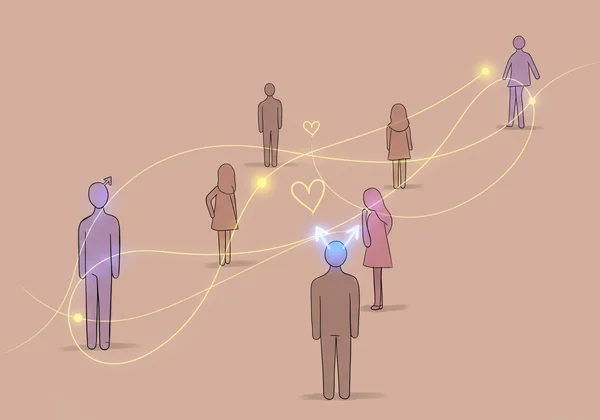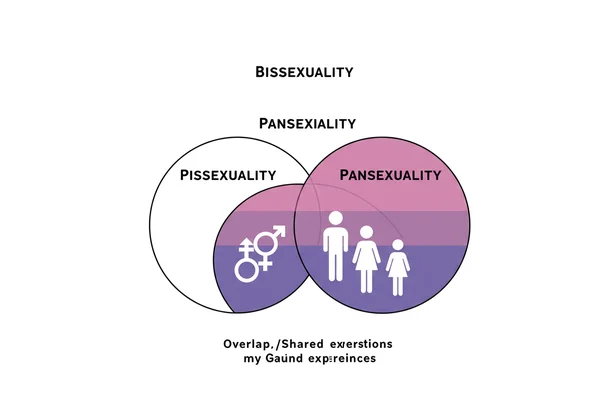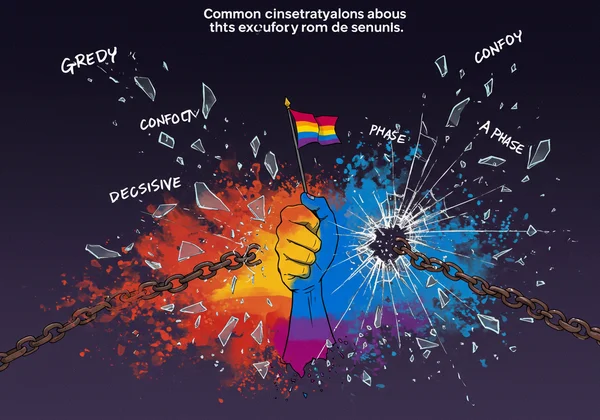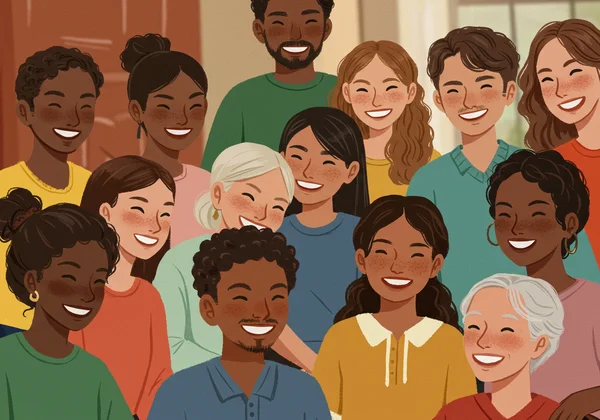Pansexuality Explained: Your Guide to Sexual Orientation and LGBTQ+ Identity
Have you ever felt that your attractions don't quite fit into the neat boxes of "gay" or "straight"? If you find yourself drawn to people for their personality, their humor, or the connection you share—regardless of their gender—you might be exploring feelings that align with pansexuality. But is it normal to question my sexuality? Absolutely. Questioning is a courageous and healthy part of understanding who you are. This guide is here to walk you through what pansexuality means, clear up common confusion, and support you as you explore your feelings on this journey of self-discovery.
What Does Pansexuality Mean?
At its core, the pansexual meaning is rooted in the idea of attraction that is not limited by a person's sex or gender identity. The prefix "pan-" comes from the Greek word for "all," signifying an attraction that can encompass all genders. For a pansexual individual, a person's gender is simply not a determining factor in whether they might feel a romantic or sexual pull toward them.
This doesn't mean a pansexual person is attracted to everyone, just as a straight woman isn't attracted to every man she meets. It means that the pool of people they could be attracted to includes men, women, non-binary individuals, transgender people, and anyone else across the gender spectrum. The focus shifts from gender to other qualities, such as emotional connection, shared values, and physical chemistry.
Defining Attraction Regardless of Gender
To truly understand attraction regardless of gender, think about the qualities that draw you to someone. Is it their sharp wit, their kindness, their passion for a hobby, or the way they make you feel seen? For pansexual people, these are the factors that spark attraction. Gender becomes as irrelevant as someone's hair color or height might be. This concept is often lovingly summarized by the phrase "hearts, not parts," which emphasizes the attraction to the person themselves over their physical form or gender label.

The Fluidity and Breadth of Pansexual Experiences
It's important to remember that sexual fluidity is a big part of this identity. No two pansexual people experience their attraction in the exact same way. One person might find they are drawn to different traits in people of different genders, while another might not notice gender at all. Your journey is uniquely yours, and there is no single "right" way to be pansexual. The beauty of this identity lies in its expansiveness and its capacity to honor the complex nature of human connection.
Pansexuality vs. Bisexuality: Understanding the Distinctions
One of the most common points of confusion is the difference between pansexuality vs. bisexuality. Both are valid identities that describe attraction to more than one gender, and there can be significant overlap. The distinction often comes down to the individual's personal definition and the role that gender plays in their attraction. It's a nuanced topic, and the best label is always the one that feels most authentic to you. If you are exploring these feelings, a sexual orientation test can be a helpful starting point for self-reflection.
Exploring Gender's Role in Bisexual vs. Pansexual Attraction
The historical and common definition of bisexuality is attraction to two genders, typically men and women. However, the modern understanding for many in the community has evolved to mean attraction to two or more genders, or attraction to one's own gender and others. In the bisexual vs pansexual conversation, some bisexual people may feel that gender is a factor in their attraction; for instance, they might be attracted to men and women in different ways.
Pansexuality, on the other hand, explicitly defines itself as attraction where gender is not a factor. It broadens the scope to specifically include attraction to non-binary, agender, and other gender-diverse individuals, asserting that gender is irrelevant to the attraction itself. Ultimately, many people could comfortably fit under either label, and the choice is deeply personal.

Historical Context and Evolving Identity Labels
Language is constantly evolving to better describe our lived experiences. Bisexuality has a long and rich history within the LGBTQ+ rights movement. The term pansexuality gained popularity more recently as our collective understanding of gender as a spectrum—rather than a binary—grew. The rise of pansexuality as a distinct term doesn't invalidate bisexuality; rather, it provides a different, more specific vocabulary for those who feel it better captures their experience. These identity labels are tools for understanding, not rigid boxes.
Common Misconceptions About Pansexual Identity
Like many identities within the LGBTQ+ community, the pansexual identity is often misunderstood. Misconceptions can be hurtful and isolating, so it’s important to address them directly. Clearing up these myths helps us all understand better and creates a safer, more welcoming space for anyone exploring their orientation.
Debunking Myths: It's Not "Greedy" or "Confused"
One of the most damaging and harmful stereotypes is that pansexual people are "greedy" or "indecisive." This is fundamentally untrue. A person's capacity for attraction is not a finite resource, and being open to various genders does not imply a lack of commitment or a state of confusion. Pansexuality is a clear and valid sexual orientation, just like being gay, lesbian, or straight. It reflects a genuine pattern of attraction, not a phase or an inability to "choose."

Pansexuality's Relationship with Gender Identity and Orientation
It's important to distinguish between sexual orientation and gender identity. A person’s gender identity and orientation are separate concepts. Gender identity is your internal sense of self (e.g., man, woman, non-binary), while sexual orientation describes who you are attracted to. Pansexuality is a sexual orientation. Therefore, a person of any gender—cisgender, transgender, or non-binary—can identify as pansexual.
Embracing and Navigating Your Pansexual Identity
If what you've read so far resonates with you, the next step is learning how to embrace and navigate this part of yourself. This is a journey of self-discovery, and it's okay to take your time. There is no deadline for figuring things out. Being gentle with yourself and seeking out supportive resources can make all the difference as you start your self-discovery journey.
Finding Community and Support Systems
You are not alone. Finding community is a powerful way to feel validated and understood. This could mean connecting with friends you trust, finding online forums or social media groups for pansexual or questioning individuals, or looking for local LGBTQ+ centers. Hearing others' stories and sharing your own can be incredibly affirming. Remember, the goal is to find people who celebrate you for who you are.
The Journey of Self-Acceptance and Exploration
Your path to self-acceptance is an ongoing journey. Some days you may feel confident in your identity, while other days you may have questions—and that is perfectly okay. Allow yourself the grace to explore without pressure. Self-reflection tools, journaling, and talking things through can help you process your feelings. The most important thing is to honor your emotions and trust that your understanding of yourself will deepen with time.

Your Journey of Understanding and Attraction
Understanding pansexuality is about recognizing that love and attraction can transcend gender boundaries. It's a beautiful and valid identity that celebrates connection in its purest form. Whether this label feels like a perfect fit or simply a stepping stone on your path, your journey of self-exploration is valid and important. Your feelings are real, and you deserve a safe space to understand them.
Ready to gain deeper clarity about your own attractions? Take our free, confidential, and supportive LGBTQ+ orientation quiz today. It's a tool for reflection, not a diagnosis, designed by LGBTQ+ community members and professionals to help you on your way. For even more detailed reflections, you can also opt for our AI-powered personalized insights.
Frequently Asked Questions About Pansexuality
How Do I Know if I'm Pansexual?
There's no single checklist, but if you find that your attraction to others isn't tied to their gender and you're drawn to people across the gender spectrum, pansexuality might be a label that resonates with you. Self-reflection is key. Tools like our online gay test can offer a structured way to explore these feelings in a private setting.
What's the Key Difference Between Pansexuality and Bisexuality?
The main difference often lies in the role of gender. Bisexuality is attraction to two or more genders, where gender might still be a factor in the attraction. Pansexuality is an attraction to people of all genders, where gender is not a factor at all. However, many people use the terms interchangeably, and the best choice is the one you feel most comfortable with.
Is Pansexuality a New Identity?
While the term has become more widely known in recent years, the concept of being attracted to people regardless of gender is not new. The language we use to describe our experiences simply evolves over time to become more precise and inclusive.
Is it Normal to Question My Sexuality?
Yes, it is completely normal and healthy to question your sexuality at any age. Humans are complex, and our understanding of ourselves can change and deepen over time. Questioning is a sign of introspection and courage. It's the first step toward living a more authentic life.